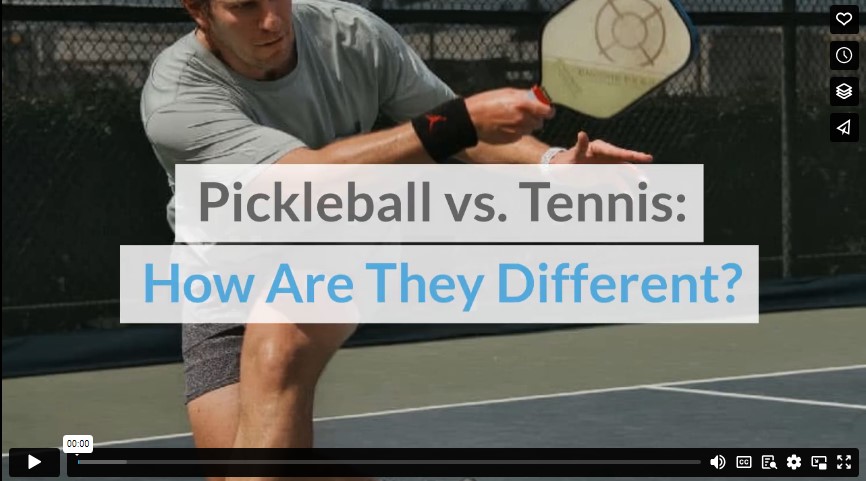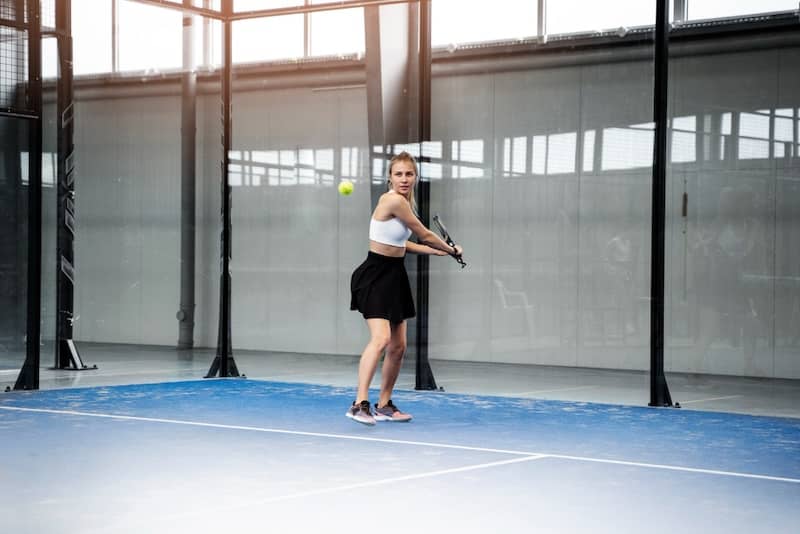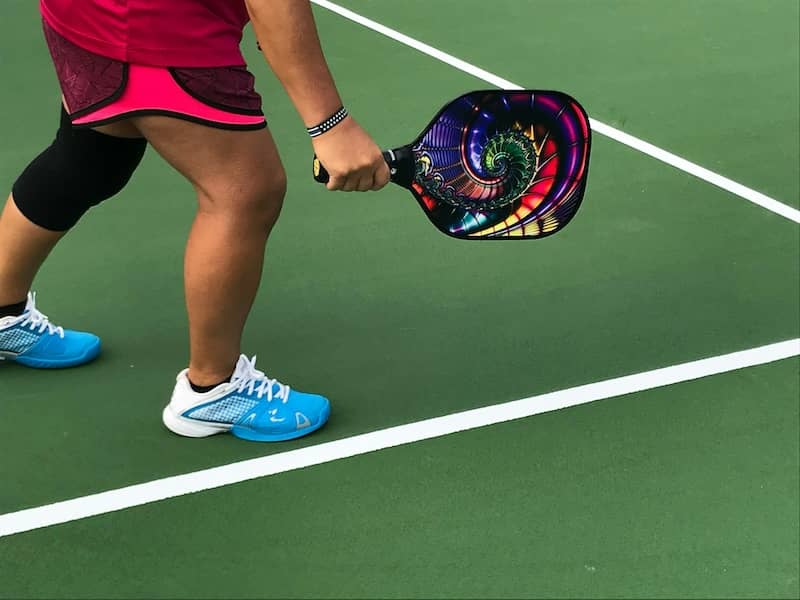Many people think pickleball is just smaller tennis. While the two games have similarities, there are plenty of meaningful differences. If you took tennis lessons as a kid or have marveled at Wimbledon or the U.S. Open from the comfort of your living room, you are in for a pleasant surprise as you explore pickleball. Think of it as tennis’ more fun, friendly, and accessible cousin. Let’s look at how tennis and pickleball differ.
Rules
While the goal with both tennis and pickleball is to return shots that your opponent can’t hit back, there are differences in the rules that make them different games.
Start with the serve: similar to tennis, a pickleball serve must go to the service box diagonal from the server. However, unlike the powerful, dominating overhead tennis serve, pickleball serves are underhanded. The serve is mostly meant to put the ball in play rather than to crush your opponent.
In tennis, you can volley–hit the ball before it bounces–whenever you’d like and from anywhere on the court. Pickleball has a “Two Bounce” rule, meaning the serve and the serve return must bounce before you hit them. After that, volleying becomes legal, but only from the back portion of the court.
The front section of a pickleball court is the no-volley zone (NVZ), also called ‘The Kitchen.’ You can never volley from this area. This rule helps keep the ball in play longer and allows even inexperienced players to return balls and score points. The NVZ is seven feet deep, measured from the net, on either side. This pickleball rule ensures you can’t stand at the net and smash the ball back at your opponent before they have at least a quick moment to reset or prepare.
Scoring
Tennis has a complicated scoring system. The scoring is fancy enough that they say “love” when someone has no points. It’s interesting, but not exactly clear for a beginner. Pickleball, on the other hand, calls it like it is. No point equals ‘zero.’ And each point you win is worth, well… one point, unlike the tennis system where one point is 15, two points is 30, and then three points is somehow 40. What?
In pickleball, the first team to 11 wins, as long as they are ahead by two or more. Tennis has points, games, and sets as part of a match. Pickleball is just played until someone gets to 11, ahead by two, and that’s it. It’s much simpler to understand and remember.
It’s important to note that you can only win a point in pickleball if you serve the ball. Losing on a play you served causes the serve to rotate to the next player, with no change in score.
Court
Pickleball court dimensions are 44 feet by 20 feet. That is significantly smaller than a tennis court, which is 78 feet by 36 feet for doubles or 78 by 27 for singles. Though you can play pickleball as a doubles or singles game, the court is the same.
The smaller court makes pickleball easier for new players and more suitable for older players or those with less advanced athletic conditioning. It can still be an incredible workout for skilled players, but the smaller playing field means it can still be enjoyable for beginners.
The pickleball net is 36 inches high at the posts and 34 inches at the center, compared to tennis’ 42/36 inch net height.
Equipment
Pickleball paddles are smaller and lighter than tennis rackets. An average tennis racket weighs about 11 ounces. The lightest pickleball paddles weigh around 7 ounces, with options going up to about 9 ounces.
The smaller, lighter paddle is easier to swing and maneuver, allowing beginners more control and better ball handling. Managing less weight also makes pickleball a more comfortable sport for older players or picklers with stretch or mobility limitations.
Most people are familiar with the fuzzy, bouncy balls used in tennis. Pickleball balls are more similar to wiffle balls. They are lightweight plastic, perforated with holes. This makes them less bouncy and causes them to move more slowly, especially when hit by beginners. But don’t underestimate the speed of a pickleball game when played by experts. With enough power and control, they can make that holey little ball do incredible things.
Because they are pressurized, you can only use tennis balls for a few days before they lose their bounce and must be replaced. Once the can is open, the clock is ticking on their usefulness. Pickleball balls can last for months, though expert players may replace them more often due to scuffs or scratches.
Culture
While the gameplay and equipment used are different, the most significant difference between pickleball and tennis is the culture of the sport. Pickleball players are generally welcoming and inclusive. While tournament players or professionals take their games very seriously, those playing just for fun and exercise are usually happy to welcome and assist newcomers.
That makes it easy and less intimidating for beginners to try pickleball to see if it works for them. The mood on a pickleball court is usually fun and light-hearted, with laughter heard far more often than curse words over missed shots or disputed calls. Pickleball is a more social game than tennis and can be leisurely or intense, depending on the players’ desires.
Pickleball is more than just tennis’ smaller sibling. Pickleball’s rules are different, the scoring easier to understand, and you play it on a different court with different equipment. More than that, pickleball has a different culture that appeals to beginners and hardcore picklers alike. If you haven’t already done so, give it a try. Whether you are a seasoned tennis player or new to racket sports, you may find that pickleball is the perfect activity for you.
Video

Infographic
Many people believe pickleball is just a smaller version of tennis. However, while the two games share similarities, there are also significant differences. Explore the variations between tennis and pickleball in this infographic.




